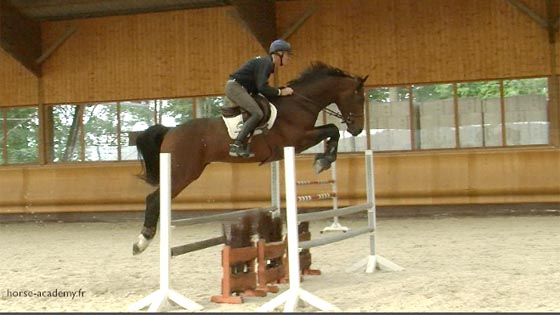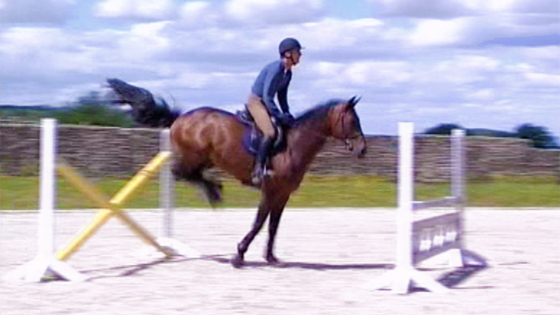Preparing for speed events and jump-offs

This 2 difficult exercise develops the horse’s concentration, obliges the rider to be in harmony with his horse and anticipate each of its reactions. It’s a good way to prepare for speed events and jump-offs.
This difficult exercise develops the horse’s concentration, obliges the rider to be in harmony with his horse and anticipate each of its reactions. It’s a good way to prepare for speed events and jump-offs.
After a good warm-up on the flat to verify the responsiveness of the horse and his ability to respect a precise speed and track, start by jumping a couple of times with a straight approach, the oxer or central vertical according to the set-up. The horse has to stay perfectly under control and straight on his 4 feet on the approach and on the landing of the fence.
For the next step, jump the two lines of verticals, staying focused on your track and particularly on the quality of the canter during the turns. You can start with some cross-rails and set up a 6-stride distance between the two verticals. Also jump 2 or 3 times the verticals or the cross-rails as, a single, on an angle.
Next, practice the final exercise, first, with some cross-rails or small verticals. Stay exact in your track and the control of your speed. Stay alert to avoid a run out since some horses may be surprised by the exercise at first.
When the exercise has been well understood, and all the parameters of speed and control of the path are well established, you can raise the fences. The distances and heights can be modified according to the horse’s stride length, his level of experience, as well as the rider’s experience
You can also combine the 2 exercises by replacing the central vertical in the exercise of 5 verticals by an oxer. Or you can put two verticals on an angle and 2 other verticals straight.

